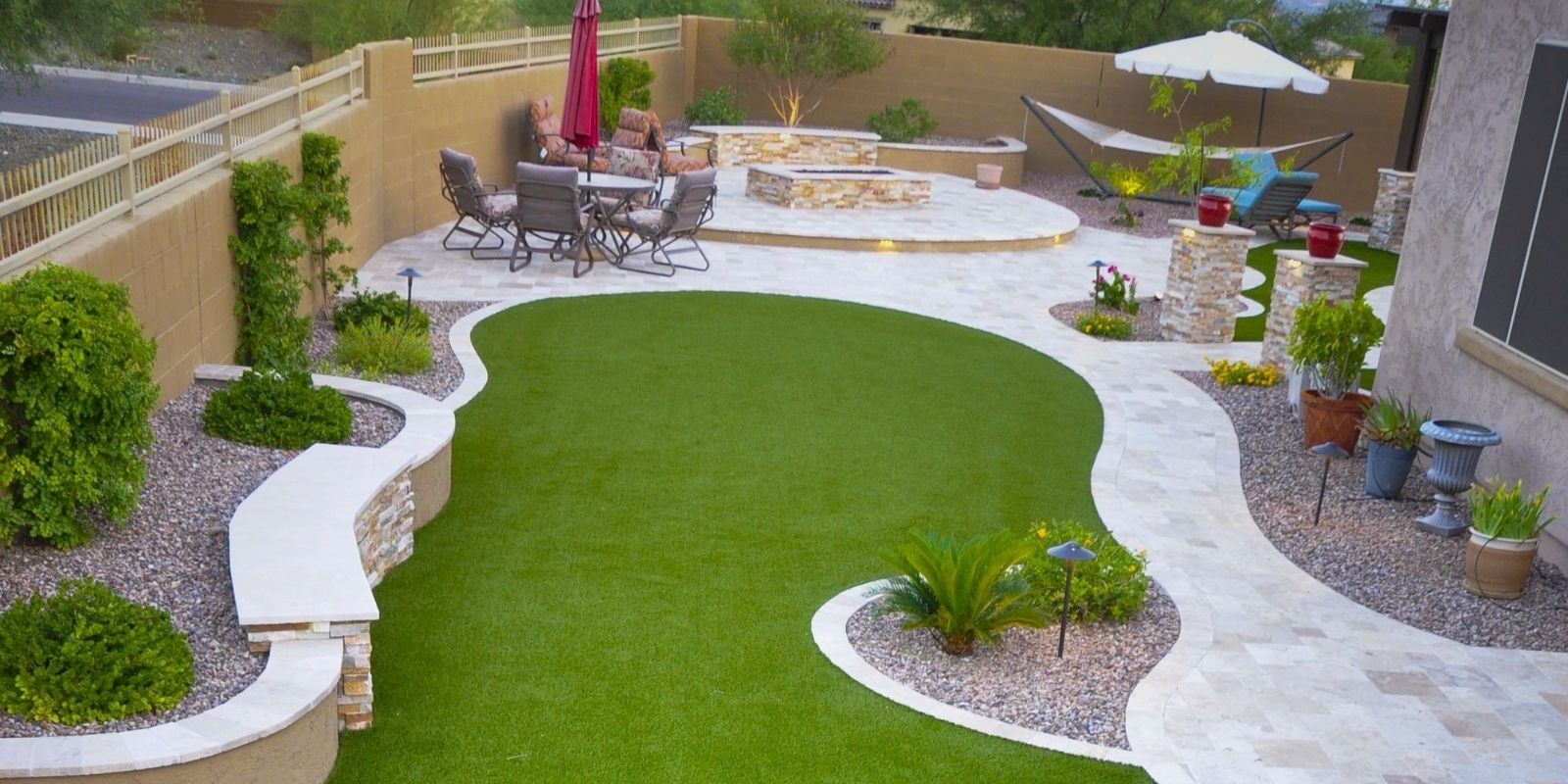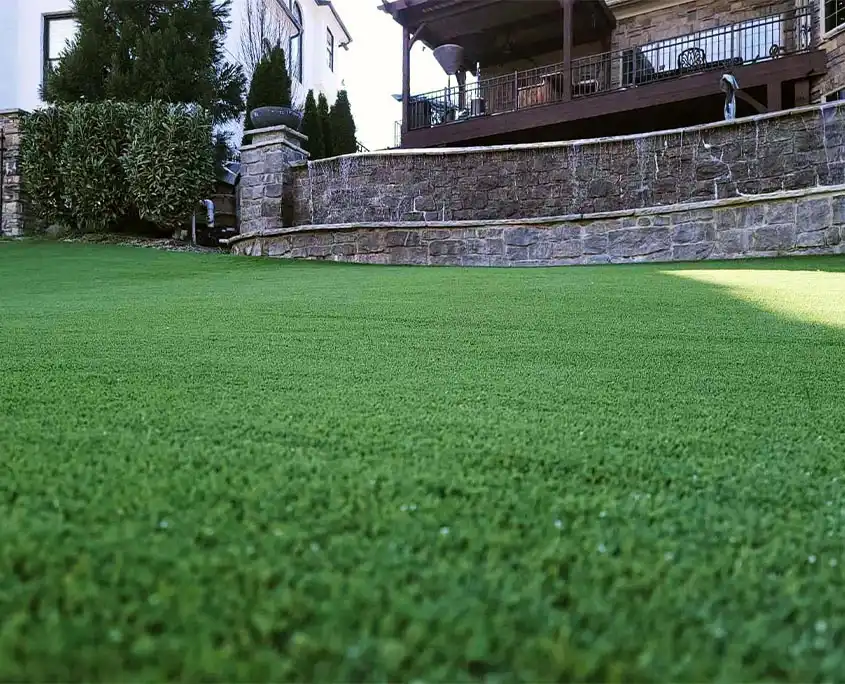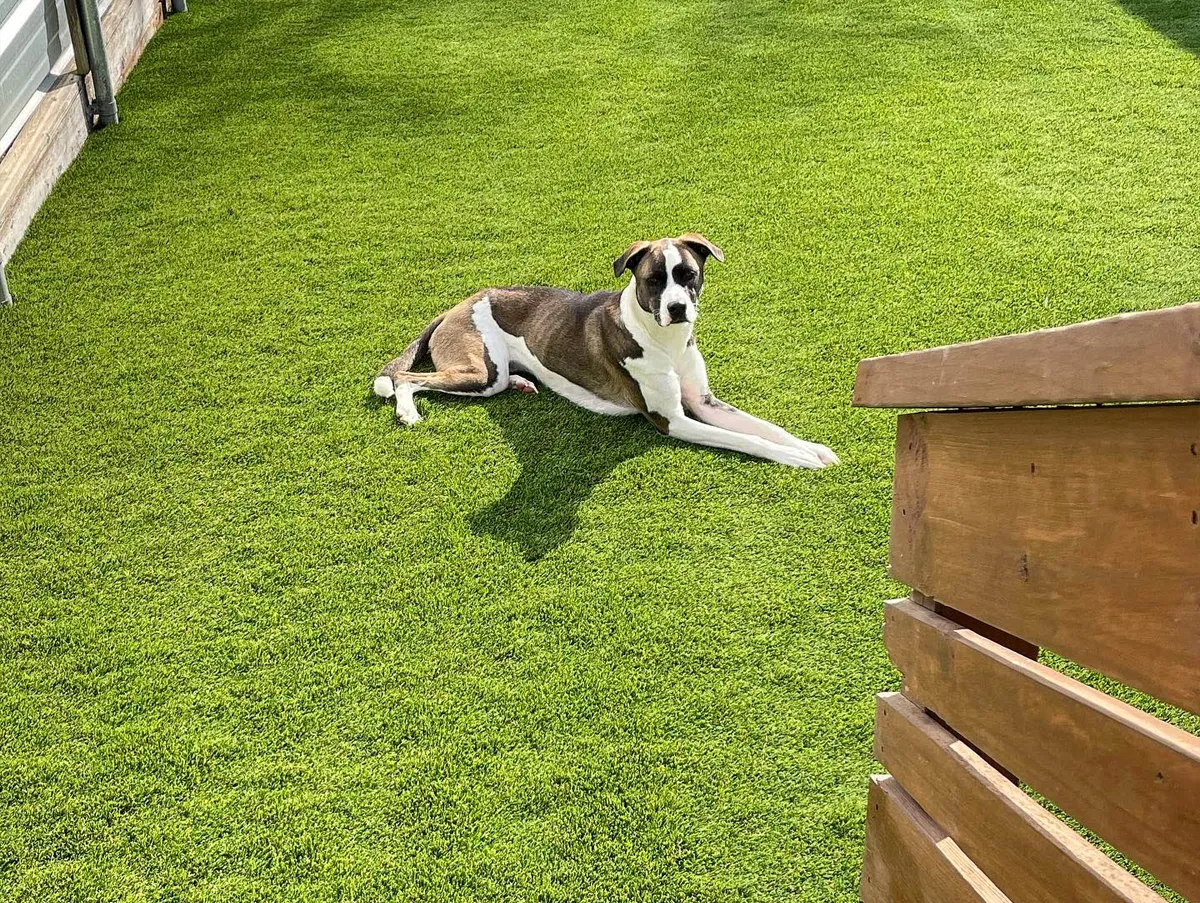Environmentally Safe Arizona Artificial Turf for a Year-Round Lush Green Lawn
Environmentally Safe Arizona Artificial Turf for a Year-Round Lush Green Lawn
Blog Article
Delve Into the Environmental Perks of Opting for Synthetic Grass Solutions
The fostering of synthetic grass services offers a compelling opportunity to resolve pushing ecological challenges. By significantly reducing water usage and decreasing the application of harmful chemicals, these options not just promote sustainable landscaping but likewise safeguard neighborhood ecosystems. Moreover, the reduced carbon impact connected with decreased upkeep activities contributes to a more lasting strategy to land monitoring. However, the effects of these benefits expand beyond mere conservation initiatives, raising concerns about their long-lasting effect on environment conservation and general eco-friendly equilibrium. Discovering these dimensions reveals a complex interaction worth taking into consideration.
Water Preservation Advantages
One of one of the most significant advantages of fabricated lawn is its ability to conserve water. Standard lawn yards call for considerable irrigation, particularly in areas susceptible to dry spell or water limitations. In comparison, artificial turf does not need watering, dramatically minimizing the total need for water sources. This attribute is particularly helpful in deserts where water shortage is a pushing problem.
By eliminating the demand for regular watering, man-made turf adds to lasting landscape methods and helps mitigate the environmental effect of excessive water intake. The conservation of water expands to the decrease of drainage, which can lead to dirt erosion and waterway contamination.
In addition, the installation of synthetic grass allows towns and homeowners to assign water sources a lot more effectively, concentrating on essential usages such as alcohol consumption water and farming. The change in the direction of artificial turf not just promotes accountable water use however additionally straightens with more comprehensive ecological objectives aimed at maintaining natural deposits.
As neighborhoods significantly focus on sustainability, the water preservation advantages of synthetic grass present a compelling case for its fostering in industrial and household landscaping tasks.
Lowered Chemical Usage
The transition to man-made turf dramatically decreases the reliance on chemical treatments frequently used in all-natural grass upkeep. Standard lawn management generally involves the application of pesticides, herbicides, and plant foods to promote development and control parasites. These chemicals can position risks to human health, neighborhood wild animals, and the environment, adding to dirt and water contamination.
In contrast, synthetic grass removes the requirement for these damaging substances. When set up, it needs minimal maintenance, mainly including regular cleansing and occasional infill replenishment. This reduction in chemical use not just profits the prompt environment but additionally adds to wider environmental stability. By minimizing the release of synthetic compounds right into the environment, synthetic lawn promotes much healthier soil and water systems.
Additionally, the lack of chemical drainage related to synthetic grass installments aids protect local rivers from pollution, supporting marine life and keeping biodiversity. Phoenix turf companies. As communities progressively focus on sustainable techniques, selecting synthetic grass presents a viable solution that aligns with environmental preservation objectives. With this shift, homeowner can delight in rich green areas without compromising eco-friendly wellness, paving the way for a much more sustainable future
Reduced Carbon Impact

Additionally, the setup of synthetic grass can cause substantial water conservation. All-natural yards call for significant quantities of water for watering, which not just adds to the carbon footprint related to water extraction and treatment but likewise stress neighborhood water resources. In contrast, synthetic grass needs marginal maintenance, requiring no watering, thus significantly reducing water usage and its linked power expenses.
In addition, the long life of synthetic grass adds to its reduced carbon influence. With a lifespan of as much as 15 years or even more, the requirement for constant replacements is lessened, resulting in much less waste and reduced energy usage in manufacturing and getting rid of standard lawn options. On the whole, synthetic grass presents a lasting alternative for environmentally mindful landscape design.
Environment Conservation
Habitat conservation is a critical consideration in the discussion over landscaping options, particularly when comparing artificial grass to all-natural grass. All-natural yard yards frequently call for comprehensive maintenance, consisting of making use of pesticides, plant foods, and herbicides, which can detrimentally impact local ecological communities. These chemicals can seep right into the dirt and rivers, harming indigenous flora and fauna and disrupting neighborhood habitats.
Synthetic grass eliminates the need for harmful chemicals, consequently safeguarding nearby wildlife and maintaining the integrity of bordering ecosystems. The installment of synthetic lawn can lead to the conversion of previous grass areas into even more biodiverse landscapes, such as pollinator yards or indigenous plant areas, which can support neighborhood wild animals.
Inevitably, the transition to synthetic grass not just preserves water and decreases maintenance efforts yet additionally fosters a much more harmonious relationship in between human tasks and the all-natural go to website setting, promoting environment preservation in the process.
Long-Term Sustainability
Long-lasting sustainability is a critical consider reviewing the advantages of synthetic grass over typical lawn yards. One of one of the most considerable benefits of synthetic grass is its resilience; it can last as much as 15-20 years with minimal upkeep, whereas natural grass needs frequent reseeding and replacement. This longevity decreases the requirement for continuous sources, such as water, plant foods, and chemicals, which are necessary for preserving a healthy grass lawn.
In addition, man-made lawn adds to a reduction in carbon emissions connected with yard care devices. Standard grass frequently call for gas-powered mowers, leaners, and blowers, all of which add to air contamination. Phoenix turf companies. In contrast, synthetic grass removes the demand for such devices, promoting a cleaner setting
Additionally, the manufacturing of synthetic grass progressively utilizes recycled products, enhancing its sustainability account. As makers embrace green practices, the environmental footprint of synthetic grass remains to diminish.

Verdict
The adoption of synthetic turf options presents considerable ecological advantages, consisting of considerable water conservation, decreased reliance on harmful chemicals, and a reduced carbon impact. Man-made grass aids in preserving all-natural habitats by reducing land disturbance and promoting long-term sustainability with the use of resilient materials. Collectively, these aspects underscore the capacity of synthetic grass to contribute favorably to ecological wellness and provide a sensible choice to typical landscaping methods in a progressively resource-conscious globe.
In comparison, artificial lawn does not require watering, significantly minimizing the total demand for water sources. By decreasing the release of synthetic substances into the ecosystem, fabricated lawn advertises healthier soil and water systems.
Moreover, the setup of fabricated turf can result in substantial water conservation. In contrast, artificial turf needs marginal maintenance, requiring no watering, consequently dramatically reducing water use and its linked energy expenses.

Report this page